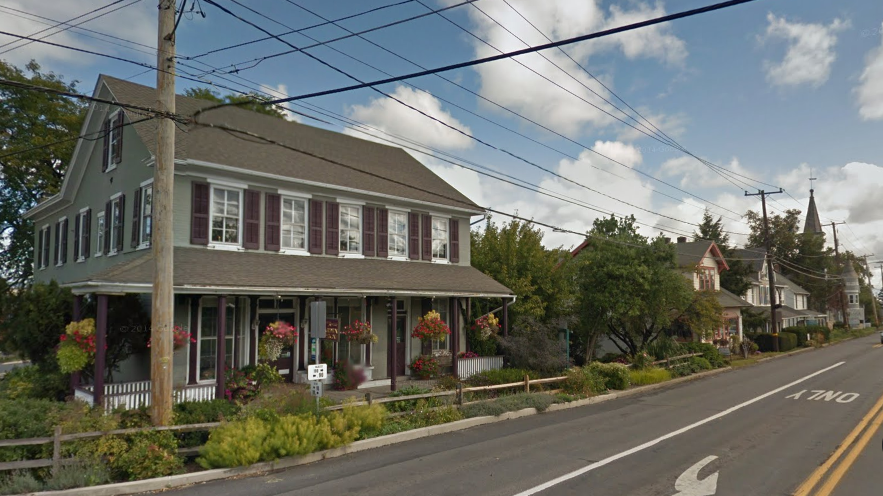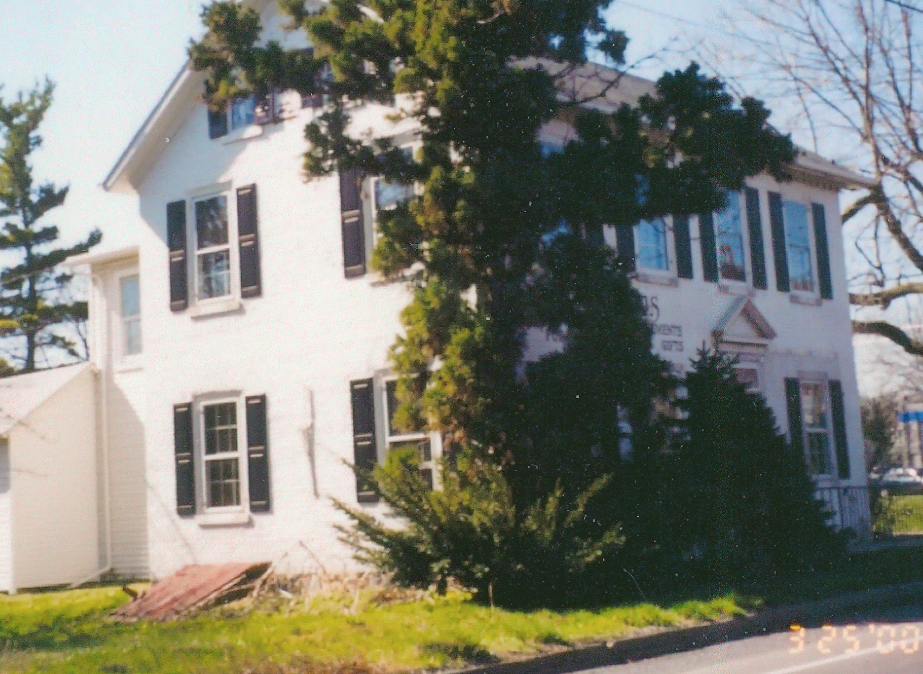In the Lehigh Valley where land is an ever increasingly valuable commodity, it’s time to stop ignoring the property tax implications of different land development patterns.
Neighborhood mixed use developments and re-developments produce more value/acre and less long term liabilities than strip commercial development. The comparison below breaks down one block in the Village of Wescosville located in Lower Macungie. It demonstrates that traditional mixed use development produces significantly more revenue, more jobs, more businesses and less liabilities – for example traffic than the strip development that occurred on the other side of the street.
An additional major benefit one that is the icing on the cake is aesthetic. The traditional side of the street maintains the historic character and form of the Village.
Here in Lower Mac we need to integrate this into our thinking. High value/high quality mixed use development can be used to balance low value high liability strip commercial development. My fear is we’re becoming increasingly saturated with the latter. Restoring balance is a win for EPSD but moreso for the twp. since we’re the ones who have to maintain roads and provide services. The major issue today is that our ordinances actually encourage (and in some cases require) strip commercial development.
The more value we capture from small infill properties near East Texas and the Hamilton Boulevard Corridor with community friendly development while also maintaining a certain “Main St.” character the more financially resilient Lower Macungie will be moving forward.
EXAMPLE 1: 2 Acre Mixed Use Neighborhood Commercial Block in Photos.
Higher revenue vs. lower liabilities

The 9 businesses on this block include: Landscape Designs, Carrols Hair Salon, Designer Re-runs (consignment apparel), Ritters upholstery, Tom Bates Construction, Werner CPA, Express sign outlet, Thrive media, Pathstones Phoebe Ministries. All together the block employes almost 50 people in addition to 6 residents. Parking is hidden in the rear making a more pleasant interaction with the street.

Adaptive reuse of Classic Village of Wescosville home stock. Today after a very nice remodel this is home to two local businesses. The entire block consists of very pleasant context sensitive buildings. Next store is an awesome reuse project of an old Church which now houses a CPA and a sign business.
Mixed Use Neighborhood Commercial Block by the numbers:
Land consumed: 2 acres
Businesses: 9
Employees total: 50
Residents: 6
*Projected EIT revenue for LMT: 984.00
School District Revenue per acre: 15,332.00 (16/Mil)
LMT LST revenue: **2,080
LMT property revenue per acre: 300/acre (.33 Mil)
Total LMT revenue: 3664.00
Traffic generation: LOW
*based on total 2015 / population. I understand not everyone contributes but thought this was the best way to get an estimate. Some of the 6 residents could be retirees. And this is assuming they all have average incomes. Anyone know a better way? I think this represents a fair projection without knowing that info.
**Adjusted to account for estimated number of 48 employees who pay LMT LST. Not all do.
2.25 acre strip commercial block in Photos
Lower revenue vs. higher liabilities
2.0 acre Strip Commercial block in Wescosville by the numbers:
Land Consumed: *2.25 Acres
Businesses: 1
Employees total: 30 (increases seasonally up to 35) 15.5/acre
Residents: 0
Projected EIT revenue for LMT: 0.00
School District Revenue per acre: 14,862.66 / acre @16.6 Mil
LMT LST revenue: **1,690
LMT property tax revenue per acre: 294/acre @.33 Mil
Total LMT revenue: 2,351.50
Traffic liability: HIGH (according to ITE standards, convenience stores with gas pumps are one of the highest traffic generating uses.)
*I counted the remnant township parcel since the WaWa precludes any future development but it really would not have changed the numbers since it’s only .25 acre
** since employment figures are seasonal I split the high and low and used 32.5
Even more untapped potential on the traditional side…. Just get the sprawl zoning code and regulations out of the way!
As mentioned above the strip commercial block will likely never produce additional value. The single use has gobbled up all the useable land on that side of the street. On the traditional neighborhood side however there remains much un-tapped potential. For ex: 2 buildings experienced major renovations which likely resulted in increased assessments. Check out those projects here. 1 or 2 of the other buildings could get the same TLC resulting in higher value.
Additionally there is 1 vacant lot that can be developed with a mixed use building. The problem? Our zoning code makes it hard due to our ‘sprawly’ setback and parking requirements.
Another potential is the small residential building next to the re-purposed Church. The owner of the parcel was approached by a business owner who wanted to open an organic menu planning consultant. Would be an excellent fit for the space and neighborhood. However, regulations currently make it too expensive renovate the building up to code. Here is another opportunity I hope someday someone figures out how to take advantage of. These two projects plus some additional updating of 1 or 2 other buildings on the block could result in another 20% increase in value resulting in even more revenue, more jobs and more business generated by one block.
Lastly, below is a snapshot of one of the buildings demolished to make room for the WaWa. If the WaWa side were re-developed via adaptive reuse projects in the same fashion as the traditional side we’d likely see the same 50%+ increase in value returned to the township with much less traffic.


